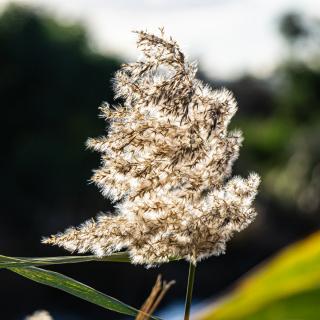

At the end of summer, the garden feels a bit sad without its flowers… unless you plant grasses there!
Full of colors and pride, they’ll bring a dynamic touch that will last through the larger part of the year.
Ornamental grasses (carex, fescue, stipa, pennisetum…) come in such a wide range of wild grasses that you’ll be bound to find a variety that will match your land and taste. They can be used in many different settings. Pair them with colorful perennials and rose trees to produce harmonious ensembles. Plunk them in a pot to effortlessly decorate balconies and terraces. Use them to mark the edge of the lawn. Set them up to camouflage the stakes of tall fall perennials like dahlia or daisy. Even such plants as Miscanthus are herbaceous giants that are perfect for creating a wind-breaking hedge.
The natural resilience and frugality of grasses lets them feel at home even in extreme growing conditions, and they require very little care. One more advantage: most of these grasses bloom towards the end of summer and the beginning of fall, just when a great many more conventional plants have wrapped up their own blooming cycle.

Purchase plants in nursery pots or small containers, and plant them in place in a clean patch, giving them enough space among the nearby plants.
Hoe and water while the roots are developing. Mulch, and the job is done!
Most grasses are very happy in full sun, some of them tolerate part shade. Take note that some varieties, if properly exposed, can even become invasive!
Generally, ornamental grasses are resilient plants that are invulnerable to diseases. Care is thus reduced to the bare necessities.
In spring, after having admired the beautiful crystal-like effect of frost on their stems in winter, cut back the growth entirely to relieve new shoots. Some grasses of the Sedge family, such as Oshima grass for instance, don’t even need that yearly shave.
Every three to four years, divide the clumps for the plants to continuously grow vigorously.
M.-C.H.